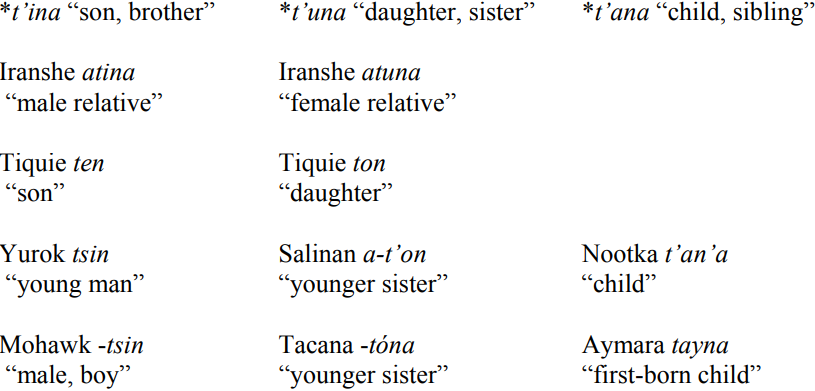
Smaller superfamilies: Amerind
 المؤلف:
P. John McWhorter
المؤلف:
P. John McWhorter
 المصدر:
The Story of Human Language
المصدر:
The Story of Human Language
 الجزء والصفحة:
4-13
الجزء والصفحة:
4-13
 2024-01-13
2024-01-13
 812
812
Smaller superfamilies: Amerind
A. Of the dozens of language groups spoken by Native Americans in the New World, Greenberg, supported by Ruhlen, classified them into just three groups: two small ones in the north, Eskimo-Aleut and Na-Dené, and an enormous one encompassing all of the others, which he called Amerind.
B. One piece of evidence for Amerind is a particular word shape referring to family members of the same age or younger than oneself, *t—na, with the vowel changing according to sex. Variations on this pattern are found throughout the New World languages and are unlikely to be accidental.
Evidence for the Amerind family:

C. Lately, genetic evidence has supported an Amerind family, showing that Native Americans’ genetic patterns differ exactly according to the three groups Greenberg identified.
D. Specialists in Native American languages have objected that the evidence for Amerind as a language group is a collection of chance correspondences and that anyone could find a similar range of chance correspondences to “prove” any classification. Ruhlen objects that it would be impossible to make a case for a *t—na root with these vowel changes from the world’s languages beyond Amerind—and he has a point.
 الاكثر قراءة في Linguistics fields
الاكثر قراءة في Linguistics fields
 اخر الاخبار
اخر الاخبار
اخبار العتبة العباسية المقدسة


